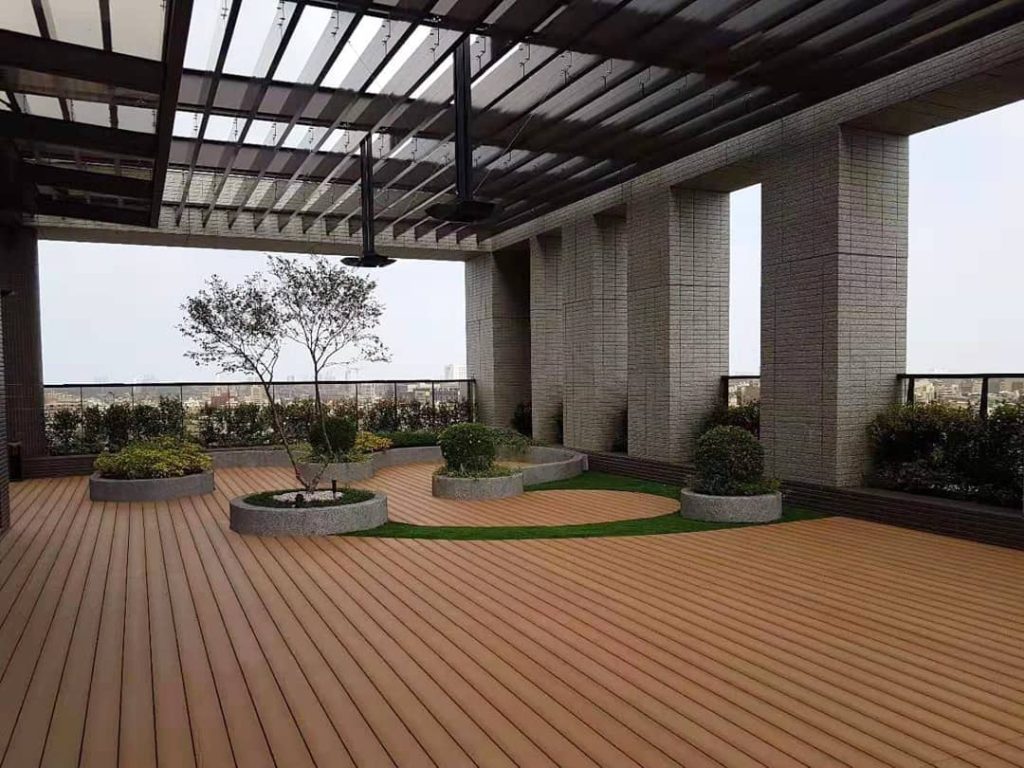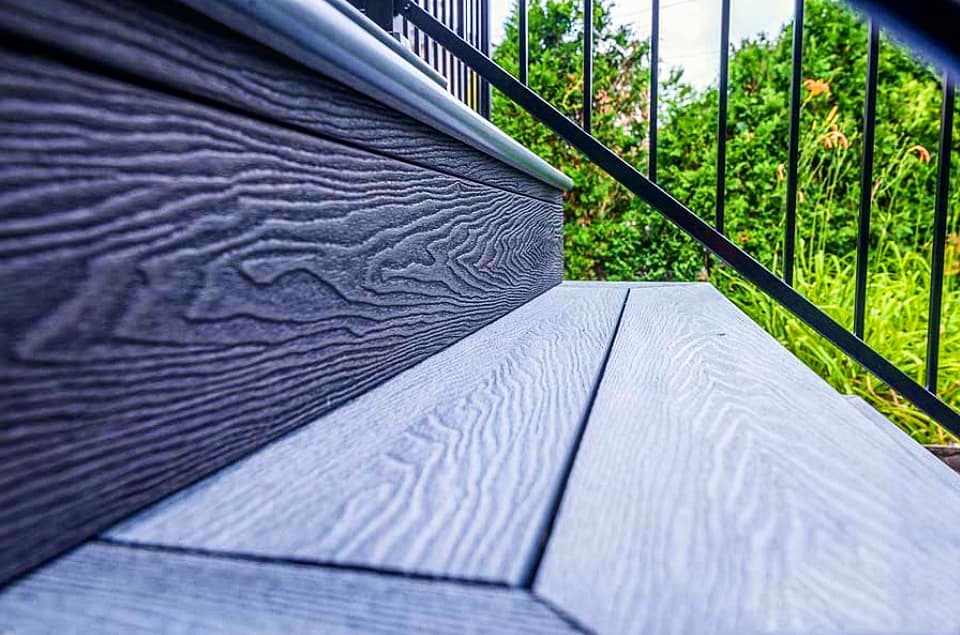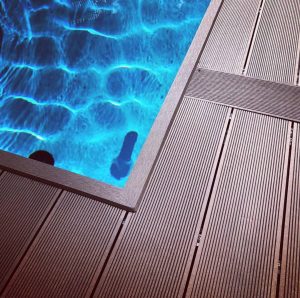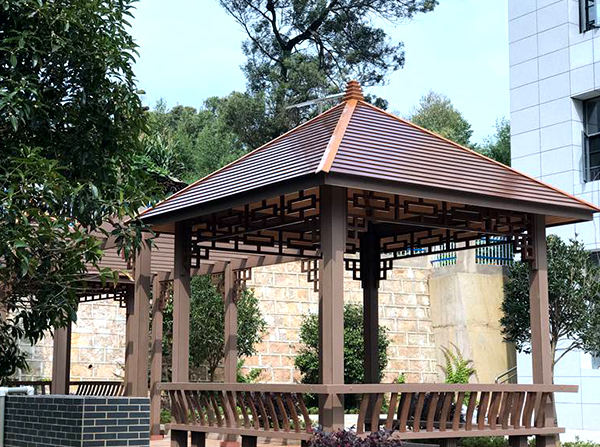Wood Plastic Composite Decking Philippines:Wood plastic composite decking is a modern building material that combines wood fibers with plastic, which results in a decking that is both durable and aesthetically pleasing. WPC decking is designed to withstand various environmental factors, making it an ideal choice for the Philippines, which experiences tropical weather, including heavy rain and intense sunlight.
Historically, WPC decking was introduced in the Philippines as a response to the limitations of traditional materials. While wood offers natural beauty, it is prone to decay and requires significant maintenance. Concrete, on the other hand, is durable but lacks the warmth and charm of wood. WPC decking bridges the gap between these two materials, providing a sustainable option that combines the best of both worlds.
Table of Contents
Wood Plastic Composite Decking Philippines: Current Market Trends
The demand for green building materials today is rising globally, and the Philippines is no exception. With this kind of increasing awareness of environmental issues, homeowners and builders are seeking materials that are eco-friendly and require less maintenance. WPC decking meets these criteria, contributing to its growing popularity.
Sustainable Living: People are increasingly aware of the ecological impact of their choices. WPC decking is made of recycled materials, which makes it a more sustainable option compared to traditional wood. This kinds of aligns with the global push towards sustainable living, encouraging Filipino consumers to choose eco-friendly products.
Aesthetic Appeal: WPC decking is available in various designs, colors, and finishes, allowing homeowners to achieve the look they desire without sacrificing performance. The versatility of WPC decking makes it suitable for various applications, from residential decks to commercial spaces.
Outdoor Living Trends: The popularity of outdoor living spaces has surged in recent years, especially in tropical climates like the Philippines. Homeowners are increasingly investing in their outdoor areas, making them extensions of their homes. WPC decking provides a stylish and durable surface for patios, poolsides, and gardens, further driving its demand.

Wood Plastic Composite Decking Philippines: Market Segmentation
Understanding the market segmentation is essential for identifying key opportunities in the WPC decking market. The segmentation can be categorized into several areas:
Residential vs. Commercial Use: The market can be divided into residential and commercial applications. In residential settings, WPC decking is often used for patios, balconies, and pool decks. In commercial applications, it is commonly found in resorts, hotels, and public spaces. The residential segment currently holds a larger market share, driven by the increasing trend of home improvement and outdoor living.
Geographic Distribution: The demand for WPC decking varies across different regions in the Philippines. Urban areas, such as Metro Manila, are witnessing a higher adoption rate due to the growing number of residential and commercial projects. Factors such as climate, economic conditions, and infrastructure development influence the regional demand for WPC decking. For example, coastal regions may have a higher demand for WPC decking due to its resistance to moisture and decay.
Consumer Demographics: The target consumer segments for WPC decking include homeowners, contractors, and builders. Homeowners, especially those aged 30 to 50, are increasingly looking for durable and low-maintenance outdoor solutions. Additionally, contractors and builders are recognizing the advantages of WPC decking in terms of installation speed and reduced labor costs, leading to increased demand from this demographic.
Wood Plastic Composite Decking Philippines: Competitive Landscape
The competitive landscape in the Philippine WPC decking market consists of local manufacturers and international brands. Local manufacturers have a strong presence, leveraging their knowledge of the local market and consumer preferences. However, several international companies have also entered the market, offering a variety of WPC decking products.
Key Players: Some of the key players in the Philippine WPC decking market include HOSUNG and other local brands that have established themselves as reliable suppliers. These companies often compete on quality, price, and customer service.
SWOT Analysis:
Strengths: Local manufacturers often have an advantage in understanding the regional market and consumer preferences. Their ability to produce customized products tailored to local needs is a significant strength.
Weaknesses: Some local brands may struggle with brand recognition and distribution channels compared to established international players.
Opportunities: The increasing demand for sustainable building materials presents an opportunity for both local and international manufacturers to expand their offerings in the WPC decking segment. Additionally, innovations in manufacturing processes can lead to improved product quality and differentiation.
Threats: Competition from traditional materials, such as treated wood and concrete, poses a challenge. Additionally, fluctuating raw material prices and economic instability may impact production costs and pricing strategies.

Wood Plastic Composite Decking Philippines: Challenges Facing the WPC Decking Market
Despite its advantages, the WPC decking market in the Philippines faces several challenges that can impact growth and consumer acceptance:
Barriers to Entry: New companies looking to enter the WPC decking market may encounter high initial investment costs, including manufacturing equipment and raw materials. Additionally, establishing a brand presence in a competitive market can be challenging.
Consumer Misconceptions: There are common misconceptions about the quality and longevity of WPC decking. Some consumers may believe that WPC decking is inferior to traditional wood, resulting in hesitation to invest in this material. Educating consumers about the benefits and performance of WPC decking is crucial to overcoming this challenge.
Competition from Traditional Materials: WPC decking competes with traditional materials, such as treated wood and concrete. While WPC offers many advantages, some consumers may prefer the natural look and feel of wood. Price competition may also arise, with traditional materials often being perceived as more cost-effective in the short term.
Economic Factors: Economic fluctuations can significantly impact the building materials market. Inflation, import tariffs, and currency exchange rates may influence the cost of raw materials, affecting the pricing of WPC decking products.
Wood Plastic Composite Decking Philippines: Opportunities for Growth
Despite the challenges, there are several opportunities for growth in the WPC decking market in the Philippines:
Product Innovation: There is significant potential for product innovation in the WPC decking industry. Manufacturers can explore new designs, colors, and finishes that appeal to consumer preferences. Developing products that mimic the look of exotic hardwoods while maintaining the benefits of WPC can attract more customers.
Eco-Friendly Market Expansion: The growing demand for eco-friendly building materials presents an opportunity for WPC decking manufacturers to position their products as sustainable alternatives. Highlighting the use of recycled materials and the environmental benefits of WPC can resonate with environmentally conscious consumers.
Government Incentives: The Philippine government is increasingly promoting sustainable building practices. Manufacturers can explore partnerships with government initiatives to encourage the use of WPC decking in public projects, further enhancing market visibility.
Collaborations with Architects and Builders: Building strong relationships with architects, builders, and contractors can enhance market reach. Educating these professionals about the benefits of WPC decking can lead to increased recommendations and projects incorporating this material.
Wood Plastic Composite Decking Philippines: Consumer Awareness and Education
To drive the adoption of WPC decking, consumer awareness and education are paramount. Many potential buyers may not be fully aware of the benefits and performance of WPC products. Manufacturers and distributors can play a key role in educating consumers through various strategies:
Marketing Strategies: Effective marketing strategies, including digital marketing, social media campaigns, and trade shows, can help raise awareness about WPC decking. Engaging content that highlights the benefits, aesthetics, and sustainability of WPC can attract potential buyers.
Workshops and Demonstrations: Organizing workshops and demonstrations can provide consumers with hands-on experiences with WPC decking. Allowing potential customers to see and feel the product can alleviate concerns about quality and performance.
Partnerships with Influencers: Collaborating with home improvement influencers and bloggers can help reach a wider audience. Influencers can share their experiences with WPC decking, providing authentic endorsements that resonate with their followers.

In summary, the wood plastic composite decking market in the Philippines is experiencing significant growth, driven by increasing consumer awareness of sustainable materials, the popularity of outdoor living spaces, and the aesthetic appeal of WPC products. However, challenges such as competition from traditional materials and consumer misconceptions must be addressed for further expansion.
HOSUNG and other key players in the market have the opportunity to capitalize on these trends by offering high-quality, innovative products that meet consumer demands. By focusing on education and marketing strategies, manufacturers can enhance awareness and acceptance of WPC decking, positioning it as a viable alternative to traditional materials.
As the demand for eco-friendly and low-maintenance building materials continues to rise, the future of wood plastic composite decking in the Philippines looks promising. With the right strategies and innovations, the WPC decking market can thrive, providing consumers with beautiful, durable outdoor solutions that contribute to a more sustainable future.








